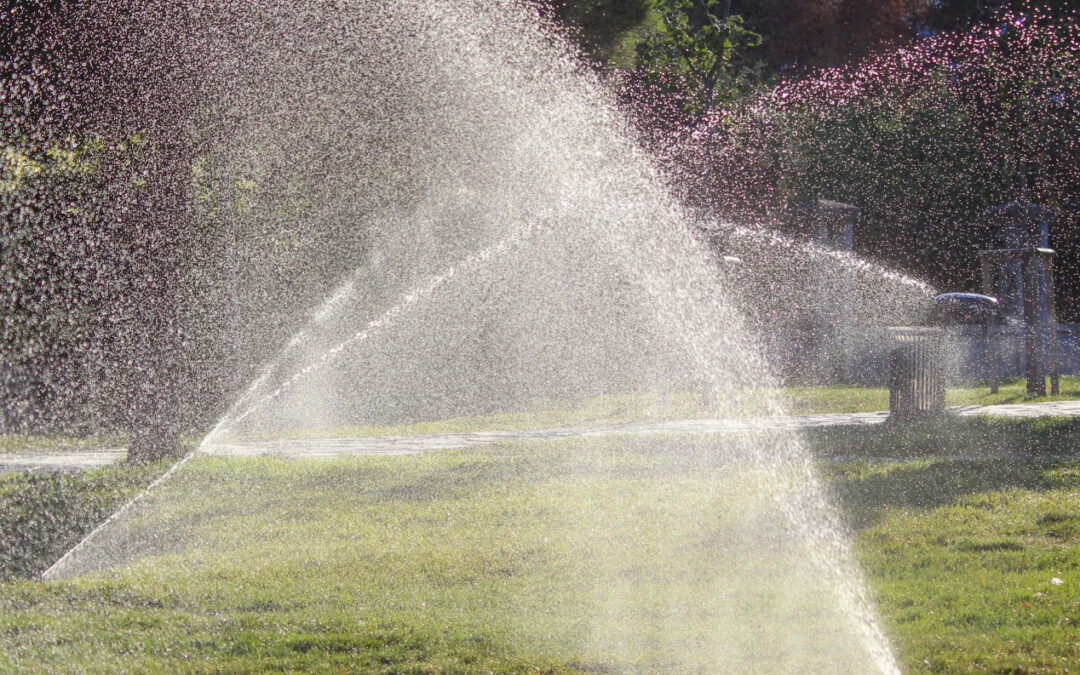What is Sod?
Sod is pre-grown grass that is cultivated and harvested with a layer of soil held together by roots or biodegradable material. It provides an instant lawn solution compared to traditional seeding methods, significantly reducing the time required to establish a green and healthy yard. Sod installation is a popular choice for homeowners looking to enhance their landscape quickly while preventing soil erosion.
Benefits of a Well-Watered Sod Lawn
A properly watered sod lawn establishes strong roots, leading to long-term health and durability. Consistent watering ensures the sod remains lush, vibrant, and resistant to drought stress. Well-hydrated sod also minimizes weed growth, enhances curb appeal, and improves air quality by acting as a natural filter for pollutants.
Understanding the Water Needs of Sod
Factors that Affect Watering Requirements
Several factors influence how much water sod needs, including soil type, sod variety, sun exposure, and surrounding landscaping features. Sandy soils drain faster and require more frequent watering, while clay-heavy soils retain moisture longer, reducing the need for frequent irrigation. Additionally, shady areas may need less water than sod exposed to full sunlight.
Climatic Conditions and Their Effects
The climate in Charleston, SC, plays a crucial role in sod watering requirements. The region experiences hot, humid summers and mild winters, making consistent watering essential, especially during the hotter months. Rainfall patterns also influence watering needs; during dry spells, supplemental irrigation is necessary, whereas excessive rain may require adjusting the watering schedule to prevent overwatering.
The Hidden Dangers of Laying Sod Over Existing Grass
Sod installation offers homeowners an immediate solution to achieving a lush, green lawn. By...
Optimal Seasons for Laying Sod: Spring vs Fall
Temperature plays a critical role in how well sod establishes itself. Cool-season grasses, such as...
The Pros and Cons of Sod Installation vs. Seeding Your Lawn
Hello! Let’s talk grass. Grass is everywhere.MOST places it’s growing wild. Fields, farms,...

Optimal Watering Schedule for Sod
| Stage | Frequency | Time of Day | Depth of Watering |
Key Considerations |
| First 2 Weeks (New Sod) |
2–4 times per day | Early morning, late morning, early afternoon | Keep sod moist but not soggy | Essential for root establishment; avoid overwatering to prevent fungal growth. |
| Weeks 3–4 (Transitioning) |
1–2 times per day | Early morning | Begin reducing watering frequency to encourage deeper root growth. | Moisture penetration of at least 4–6 inches |
| 1 Month + (Established Sod) |
2–3 times per week | Early morning | 6 inches deep | Deep watering promotes drought resistance; adjust based on rainfall. |
| Hot Summer Months |
3–4 times per week | Early morning | 6 inches deep | Increased watering needed due to evaporation; monitor for dry spots. |
| Cooler Fall/Winter Months |
1–2 times per week | Mid-morning | 6 inches deep | Reduce watering frequency as temperatures drop; avoid watering before frost. |
Daily Watering Guide for New Sod
For newly installed sod, the first two weeks are crucial for root establishment. Watering should occur 2–4 times per day to keep the sod consistently moist but not soggy. Mornings and early afternoons are the best times to water, ensuring the sod absorbs moisture before the heat of the day.
Transitioning to a Reduced Watering Schedule
After two weeks, sod watering frequency can be gradually reduced. By the third week, watering can be adjusted to once per day, and after a month, the schedule can shift to 2–3 times per week, depending on soil moisture levels and rainfall. Deep, infrequent watering encourages root growth and strengthens the lawn.
Seasonal Adjustments for Sod Watering
Different seasons require adjustments to sod watering practices: – Spring & Summer: Higher temperatures increase evaporation rates, necessitating frequent watering. – Fall: Reduced temperatures and increased rainfall may require scaling back irrigation. – Winter: While dormant sod requires less water, occasional hydration during dry winter periods prevents dehydration and root stress.
How Much Water Does Sod Require?
Determining Water Depth
Proper sod watering ensures moisture penetrates at least 6 inches into the soil to promote deep root growth. Light surface watering can lead to shallow roots, making the lawn more susceptible to drought stress.
Tools to Measure Water Usage
To determine if your lawn is receiving adequate moisture, consider using: – Rain Gauges: Measure natural rainfall and adjust irrigation accordingly. – Soil Moisture Meters: Provide real-time moisture readings to prevent over- or underwatering. – Catch Cups or Tuna Cans: Placing these in different areas of the lawn during watering helps measure uniformity and ensure each section receives adequate hydration.
Signs of Overwatering and Underwatering
Identifying Signs of Overwatering
Overwatered sod exhibits symptoms such as: – Persistent soggy or spongy soil. – Yellowing grass or fungal growth (mushrooms, mold). – Increased weed growth, especially moss or algae.
Identifying Signs of Underwatering
Signs that sod isn’t receiving enough water include: – Dry, brittle grass that appears blue-gray. – Footprints that remain visible after walking on the lawn. – Soil pulling away from the sod, indicating extreme dryness.
Troubleshooting Sod Watering Challenges
Dealing with Water Restrictions
During drought periods or city-imposed water restrictions, homeowners must optimize irrigation efficiency. Using a rainwater collection system, drip irrigation, and watering during permitted hours can help maintain sod health while adhering to local conservation laws.
Solutions for Uneven Water Distribution
Conclusion: Achieving a Vibrant Lawn with Proper Sod Watering
Proper watering is the key to a healthy, long-lasting sod lawn. By following the recommended watering schedule, adjusting for climate and seasonal changes, and using effective irrigation techniques, homeowners can establish a lush, green lawn that thrives year-round
Get Professional Help from Henry Landscaping

The Hidden Dangers of Laying Sod Over Existing Grass
Sod installation offers homeowners an immediate solution to achieving a lush, green lawn. By transplanting mature grass directly onto prepared soil, sod provides instant aesthetic appeal without the waiting period associated with seeding. However, the success of this...
Optimal Seasons for Laying Sod: Spring vs Fall
Temperature plays a critical role in how well sod establishes itself. Cool-season grasses, such as fescue and Kentucky bluegrass, thrive in moderate temperatures, making fall the preferred season for installation. Conversely, warm-season grasses like Bermuda and...
The Pros and Cons of Sod Installation vs. Seeding Your Lawn
Hello! Let’s talk grass. Grass is everywhere.MOST places it’s growing wild. Fields, farms, prairies… But you’re here because you want it in your yard. That’s great! Most of us do. There are tons of different questions to consider though when putting it there, such as...
Tips for Sod Installation and Maintenance
Tips for Sod Installation and Maintenance Preparing the Ground for Sod Assess Your Yard Identify sun, shade, and soil conditions to choose the right type of sod.Measure the area to determine how much sod you’ll need. Add 5–10% extra for irregular areas or...
